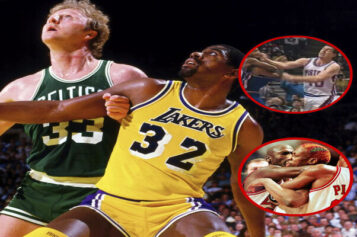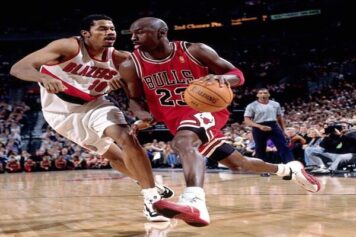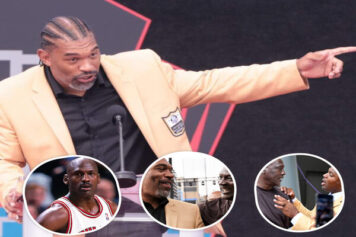For those in the know, when discussing the greatest female ballers in the history of the game, there are only a few legendary, “brand names.” I want to give quick props to pioneers such as Nancy Lieberman, Ann Meyers, Lynette Woodard and Cheryl Miller, who certainly belong on the list of the most influential women basketball players in history, but their glory came before womens basketball found an identity in this country and became a permanent part of the fabric of Americas sports landscape.
The pre-Title IX warriors and those who were too old to reap the benefits of the ’96 Olympics laid the foundation for the future growth of woman’s basketball. Those women are on a level all unto themselves. However, none of them were able to play in the WNBA, which launched in 1997, finally giving exceptional professional female players an American league to call home once their college eligibility was up.
Cheryl Miller coached in the WNBA and was past her balling days of the ’80s by the time the league popped off, but its safe to say that Miller, sister of former NBA shooting guru Reggie Miller , is considered the dopest female hardwood hunter to ever lace ’em up.
Millers magnificence came before the advent of ESPN and the proliferation of cable networks and social media. Outside of the world of womens basketball and a brief Olympic stage, Millers phenomenal exploits are relatively unknown to most male basketball fans. They do, however, know her name.
Same with Lisa Leslie, the Kareem Abdul-Jabbar of WNBA players. Shes the uncontested greatest big woman in WNBA history. She once scored a Wilt Chamberlain like 100 points in one half in high school. No BS.
Same with Swoopes. The 2016 Hall of Fame inductee starred for Texas Tech before becoming the first player signed to the WNBA in 1997. She was often referred to as the “female Michael Jordan” for her dope combination of offensive and defensive skills. Swoopes won three Olympic gold medals and is a multiple WNBA MVP. She is also the first woman to have a Nike shoe named after her in 1995.
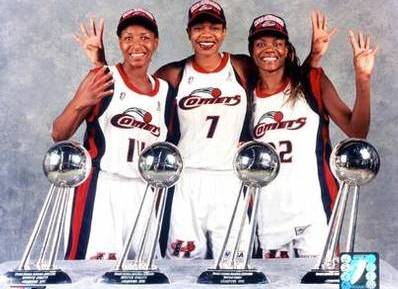
(Photo Credit: fanbase.com)
As cat quick and multifaceted a forward as the league has ever seen, Swoopes helped lead a loaded Houston Comets squad to four consecutive WNBA championships from 1997 to 2000. Despite playing alongside two other deadly scorers and fan favorites in teammates Cynthia Cooper and Tina Thompson, Swoopes never lost any star power, even if Coop and Thompson had a head start in the game.
Swoopes was already a legend of sorts before she entered the WNBA. She was a prolific scoring machine in college, probably a top three all-time point-pourer as far as skills go. In 1993, Swoopes dropped 47 points in the NCAA Championships against Ohio State to help the ladies of Texas Techs win the chip.
Beyond her legendary game and her impact on raising the popularity of womens basketball, Swoopes became an advocate for social issues that were totally separate from her basketball excellence.
In 1997, right before the inaugural WNBA season was to start, Swoopes went against the grain and against the unwritten rules of womens basketball when she got pregnant and became the first prominent female athlete to take a maternity leave in the middle of a burgeoning career.
Her move was lauded by women in general. Since Swoopes openly and honestly expressed her sexuality and embraced any possible criticism, many other women athletes have done the same and it’s now an accepted part of the womens professional athletic work place. Because of her notoriety and success with the 1996 US Olympic Team, the WNBA marketed Swoopes’ pregnancy as positive, capturing the true essence of how women juggle the demands of motherhood and being a pro baller. Shes credited with helping bring pro sports into the future.
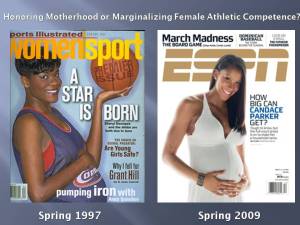
Swoopes is also a pioneer in the constant struggle for acceptance in the work place for gay and lesbian athletes. Before Swoopes admitted to the press in 2005 that she had been in a long-term relationship with Alisa “Scottie” Scott, an assistant coach with the Comets, most people chose to ignore the issue of same-sex relationships in the WNBA. It was the elephant in the room.
“I’m just at a point in my life where I’m tired of having to pretend to be somebody I’m not,” Swoopes revealed to the New York Times. “I’m tired of having to hide my feelings about the person I care about. About the person I love. …I was basically living a lie.”
Before coming out, Swoopes had a four-year marriage to Eric Jackson, had a son and then the couple divorced in 1999. In 2011, she remarried a man, once again, fearlessly expressing herself as she chooses and helping to conquer any outdated notions of what love is and becoming a champion for thousands of people who are living with uncertainties, doubts and fears about being true to their sexual identity.
As the years pass and Sheryl Swoopes’ legacy continues to take shape, it’s clear that her story starts with a deadly jumper and a first step that any of her fellow Hall of Fame inductees would have a hard time keeping up with, and ends with a courage that has changed lives, altered basketball history and entertained millions.

